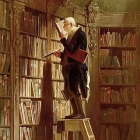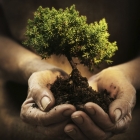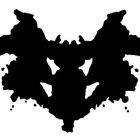Canvas - oil painting technique
Painting itself is hard enough, but painting on a poorly done canvas is even harder. Therefore, I always prepare my own canvas and drawing board. This is much cheaper than buying canvas in the market. Bought canvases have several disadvantages. First of all, the manufacturer of the canvas is not willing to tell you what the canvas is made of and how it is made, except to simply say "single coat" or "double coat". Secondly, no matter what the price of the canvas, the surface grain is the same, I have to apply another layer; Or in the painting regardless of need, with thick coating method, so as to change the original smooth surface. The best thing about homemade canvases is that they can be made into a variety of surface textures. In terms of the quality of the surface and durability, it is well worth making your own canvas. When I make canvas, I don't cut out the whole cloth and use it, but I make a single frame. It's good to do that. The canvas is stretched directly on the inner frame at once, with little need to be moved or re-stretched. Since the canvas is stretched directly over the inner frame and tightened by a layer of hot glue, the tension on their surfaces is the same, less likely to sag and need not be inserted into the rod head. Moreover, dry, unpainted canvas does not have to be taut, so the inner frame will not deform due to strong and uneven tension. I cut my canvas and canvas in a time-tested way. I use two fine Belgian linens. For sizes larger than 16 "x 20", use Uttleck Model 21 A with medium fabric print, which has A weave density of 62 branches per square inch. The smaller pieces are Uttleck model 66 J, which is very smooth and has 92 lines per square inch. I cut the canvas to size and stretched it over a standard tenon wood inner frame, taking care not to wrinkle. Then, I use a sponge to brush the hot rabbit skin glue onto the cloth. The solvent of rabbit skin glue is like thin gravy, only it smells worse. It consists of six tablespoons of rabbit skin glue (42.5 grams) dissolved in a quart of water at a temperature of 20-40 degrees below the boiling point (212 degrees Fahrenheit). Never reach or exceed the boiling point. After a few hours the glue will dry and the canvas will tighten. Then, use sand to wipe off some rough spots on the surface, and repeat with a layer of glue. But I used much less glue than I did the first time. Once dry, the base can be applied. I used pure lead white mixed with refined resin turpentine to a spreadable consistency, and used a hard No. 4 pen to spread it deep into the canvas. The coating is very thin, but I let the brush strokes stay on the canvas. After about ten minutes (depending on the humidity of the air), the turpentine evaporates to a certain extent, and the lead white almost returns to its original paste consistency. At this time, I use a large painting knife to decorate the surface, selectively scraping, smoothing, or modifying the original brush strokes, until the surface texture of the canvas resembles that of an ancient state frescoes. This job needs to be done quickly, because the lead white consistency is only good for a minute or two, and when the turpentine evaporates further, it hardens. In SHORT, THE TIME THAT DECORATES WANTS TO MASTER APPROPRIATE, TOO LATE COATING LAYER IS TOO HARD, CANNOT DECORATE COMPLETELY, PREMATURE CAN MAKE CANVAS TOO SMOOTH, LACK OIL PAINTING TO GO UP WHEN MUST BE CONVEX GRAIN. Making canvases sounds like a lot of work, and it is, but I usually do more than thirty at a time, and finish them all in three days. This is done twice a year, with 60 or 70 canvases and an equal number of panels. The drawing board is made of 1/4 "untreated Maisonie fiberboard, glued on both sides to prevent warps, and served as a base in the same way as a canvas. Canvas and drawing board can be dried for ten days after they are made. Since the glue has the characteristic of absorbing the moisture in the air, I pay attention to the weather forecast and choose the day with medium humidity to apply the glue and the base. In addition, after finishing the base, write the date on the back of each canvas, and use the long one first.





















Join the Discussion